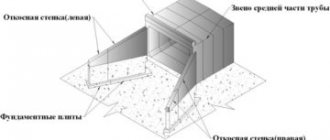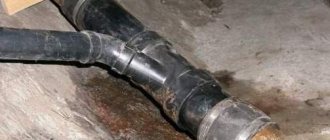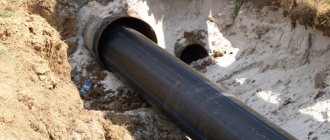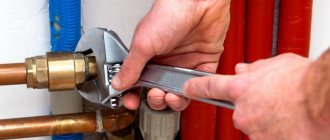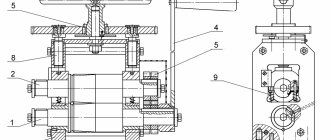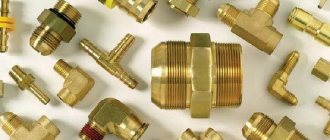Today, construction is growing rapidly, so you need to know how to coordinate and lay a sewer system across an asphalt road . But it also happens that some communications require repair and reconstruction, so you need to know what is included in the engineering networks so as not to cause damage to existing ones. The most difficult thing is when it is necessary to build new communications under exploited roads, since all this must be carried out under strict control and compliance with existing construction and installation rules and safety requirements.
A utility network can combine a very wide range of communication lines. There are many different communications under our roads, such as water supply, gas pipelines, sewerage, as well as optical and telephone cables and many others. The main principles include:
- during the installation of sewerage or other communications, it is necessary to maintain a distance from a nearby building or structure;
- the laying of sewerage should only pass through the green technical strip, and it is also possible to install communications directly under the roadways if tunnels are installed there;
- sewerage is laid at a minimum depth; according to SNiP, the length should depend not only on the purpose of the networks, but also on such standards as: how much the soil freezes, and the necessary conditions are created when providing external loads, and also take into account the peculiarities of the relief, hydrogeological conditions and the manufacturability of the work process;
- if it is necessary to use a new section of the road, then it must be developed in a common collector;
- Installation work is strictly prohibited from being carried out under expressways, city-wide highways and roads in adjacent areas.
External gasket
It is considered the easiest way to install the necessary pipes. On the other hand, pipeline systems remain visible, which is not always appropriate from the point of view of the attractiveness of the building. Among the advantages of the described method, it makes sense to highlight the following:
- Simplicity. Heating installation is carried out quite quickly and does not require various preparatory measures.
- Availability. If necessary, the pipelines can be repaired without any problems since they are easy to access.
- No heat loss. Since the surface of the pipes does not come into contact with the wall structures or floor, the heat does not disappear anywhere, but is distributed throughout certain rooms.
- Economical. To lay pipes along the external areas of various building elements, small amounts of different materials are required. No adapters, no insulation products, or putty are needed.
Does it make sense to do the work yourself?
Before making a final decision on how to lay a pipe under the road, you need to think about the feasibility of this undertaking. If the tunnel is more than 10 meters long, then in this case it is better to avoid the “feat”, since the process will take a lot of time and effort.
The same conclusion can be drawn if there are other underground communications on the site, or if there are difficult-to-pass areas on the territory. Soft soil (sandy, clay) will simplify the task somewhat, but you need to know well not only your site, but also all the features of the stages.
Do-it-yourself piercing can be considered if:
If you have any doubts about your own abilities, and the preparatory work, which may take several weeks, is not inspiring, then it is better to turn to professionals. They will complete the task in a few days. A 100% guarantee of the safety of the road surface and route is another advantage; it still cannot be provided by independent work.
How to lay a pipe under the road? It’s not easy if the master and his assistants chose thankless manual labor and the same tools. It’s easy and fast if most of the work is done by special equipment and professionals. Many craftsmen who decide to make a gasket without the help of equipment encounter unexpected problems. Therefore, it seems that it makes sense to donate a small amount (1000-1500 rubles), but at least avoid unnecessary headaches.
The following video will tell you how to lay pipes under the road with homemade devices:
Was this article helpful? We want to improve. Thanks for your opinion!
Open gasket
Open laying of pipes is carried out on existing or specially erected building structures (walls, supports, overpasses) or in through and semi-through channels and galleries), in a trench (underground) or on the ground (on the ground) as follows:
- on free-standing foundations or supports;
- with (installation of weights on the pipe or with anchoring of the pipe into the ground) - measures against floating;
- on the ground, followed by backfilling the pipe with imported or local soil.
The open method of constructing crossings under highways includes the following methods of organizing work:
- without disturbing the volume of traffic (with a detour or crossing);
- with blocking traffic in two stages on one half of the road width, then on the other;
- with short-term blocking of traffic on the road (without a detour or crossing).
When crossing roads in difficult geographical and hydrological conditions, open-pit tunnel construction can be used. For example, such a crossing was built on the CPC oil pipeline at the intersection of the Krasnodar - Novosibirsk highway. Access to the pipes during work and operation is free.
Pipe laying is carried out in accordance with the work execution plan (WPP), developed on the basis of the project’s working documentation and current standards.
Excavation work to develop trenches and pits is carried out in accordance with the rules for the production and acceptance of excavation work in compliance with the requirements:
- digging is carried out without disturbing the natural structure of the soil at the base with a shortage of 0.10-0.15 m, then cleaning is done with a bulldozer or manually;
- if the soil is developed below the design level, medium-sized sand is poured onto the bottom with careful compaction (compaction coefficient Kupl = 0.98) with a thickness of no more than 0.5 m;
- At the bottom of the trench, a sand bedding of 0.10-0.15 m is arranged, depending on the diameter of the pipe;
- when backfilling, a protective layer of sandy soil of 0.15-0.30 m is made over the pipe, not containing solid inclusions (crushed stone, stone, etc.) with layer-by-layer compaction (especially the spaces between the pipes, as well as between the pipes and the trench wall); joints are not filled;
- backfilling of the pipeline is carried out with layer-by-layer compaction of the soil 0.2-0.4 m to the planning mark, or without layer-by-layer compaction with the construction of a bead of soil above the pipeline; the height of the roller is carried out according to calculations taking into account the settlement of uncompacted soil to the planning level of the ground within 1-2 years;
- When carrying out work in winter, installation of pipelines on a frozen base is not allowed.
Before laying pipes, connecting parts and elements are carefully inspected to detect cracks, chips, deep cuts, punctures, tears and other damage to the protective shell.
After hydraulic testing of the pipeline, it is backfilled and the joints are compacted, followed by uniform backfilling of the trench with an excavator with a layer of local soil 0.3 m thick, leveling the soil manually and using an excavator bucket.
Auger drilling
This is another answer to the question of how to lay a pipe under the road. In this case, the hydraulic unit acts as the main working unit. This trenchless pipeline installation differs from the previous method.
- First, pits are dug. Their depth should be one meter greater than that of the trench. A hydraulic unit with an auger is lowered to the bottom of the inlet area.
- The well is drilled using a compression pipe. Monitor the correct operation of the laser. Part of the soil is removed, creating a hole.
- After the first section with the nozzle almost completely enters the ground, the next element with the auger is attached to it.
- At the moment when the end of the column appears in the opposite pit, it begins to be removed from the well, sequentially removing the augers.
Pipes or cases are immediately installed inside the tunnel. The maximum diameter of such holes is 1720 mm.
"Puncture" method
There are several puncture methods: vibration, hydraulic puncture, puncture using a soil piercer, mechanical puncture using a hydraulic jack, pneumatic puncture using a pneumatic punch, Matvienko puncture (3 mechanics and 10 kg sledgehammer).
Puncture is the formation of holes due to radial compaction of the soil when a pipe with a conical tip is pressed into it. Tips of various shapes are used, the most common of which are in the form of a straight circular cone, the use of which creates minimal soil puncture resistance. The puncture force significantly depends on the sharpening angle of the tip.
Mechanical puncture with a hydraulic jack
Pressing is done using a hydraulic jack. A pipe section with a tip is placed in the pit and, after alignment, it is pressed into the ground with a jack to the length of the rod stroke. After the rod returns to its initial position, a pressure pipe (ramrod) is inserted into its place, and the process is repeated. After pressing the first pipe link to its full length, the ramrod is removed, the next link is lowered into the pit and butt-welded to the one already pressed into the ground. Next, the welded link is pressed down, and the cycle is repeated until the entire length of the section is punctured. For each cycle, the pipe advances 150 mm.
Creating a pressing force on the rear end of the case instead of a jack can be provided by the traction force of a winch or tractor using cables or pulleys. Instead of a long ramrod-pusher, short pressure pipes with flanges are also used, the length of which is equal to the stroke of the jack rod. In this case, after puncturing the soil for the length of the stroke, the jack rod is returned to its original position and another pressure pipe is inserted into the resulting space to continue the puncture process.
Using the puncture method, pipes with a diameter of up to 500 mm are laid over a length of 30-40 m at a penetration speed of 2-3 m/h; the amount of force required for puncture, depending on the properties of the soil and the diameter of the pipes, is 50-300 tons.
The method is practiced in well-compressible soils; holes are made for pipes with a diameter of 100-400 mm at a depth of more than 2.5-3 m. In low-compressible soils (sand, sandy loam), to ensure the stability of the walls, in addition to the horizontal force, transverse and vibration effects are used, with In this case, the hole diameter is up to 300 mm.
Pneumatic punching
Pneumatic punching is carried out using a special tunneling tool of vibration-impact action - a pneumatic punch, first proposed by the Siberian Branch of the USSR Academy of Sciences, which allows drilling wells up to 50 m for pipelines up to 400 mm inclusive.
The unit is a self-propelled pneumatic machine, the body of which is the working body that forms the well. The hammer, under the influence of compressed air, makes reciprocating movements and strikes the front inner end of the body, driving it into the ground.
Hidden gasket technology
Preparation. Heating installation begins with choosing its type
If you want to make a system with forced circulation, we recommend that you pay attention to installing the pipeline under the floor or in a wall structure located next to it. She is perfect for this
Natural circulation of the working environment involves placing the discharge pipe directly in the suspended ceiling. The descents of the risers are protected by a decorative box or laid in the walls. The lower pipeline must be installed in the wall.
Marking, grooves, main laying
As in the previous method, marking is carried out on wall structures. Creating a groove is a very labor-intensive job associated with the release of a large amount of dust. It is impossible to do without construction protective equipment.
To create a groove you will need a grinder and a hammer drill.
Cutting the grooves is done with an ordinary grinder equipped with a diamond wheel. The tool is needed to set boundaries. A hammer drill is required for knocking out. The main laying is carried out in a groove. Clips are used as fastening elements.
Installation of heating devices
Accompanied by connection to the appropriate highways. For this, different adapters are used. The goal is to assemble the system into a single structure.
Crimping
Required by heating communications. According to established standards, it is produced under pressure. The working fluid is, naturally, water.
https://youtube.com/watch?v=4Ayas6sXaWU
Walling or decoration
Before starting work, the pipeline must be insulated with materials capable of retaining heat. The following methods are suitable for decoration:
- Plaster. It comes down to sealing the grooves with a solution of cement and sand. The strength of the solution is low. Due to possible repair work in the future. Instead of the given composition, it is allowed to use gypsum-based plaster.
- Plasterboard sealing. The gypsum board is cut into a number of strips. They are glued in place using gypsum plaster. Subsequent putty completely masks the groove. The work is completed quickly. If necessary, the structure can be easily dismantled. The pipes are not firmly attached. The walls do not deform due to heat.
- Box. Made from plasterboard structures. No need to hammer the walls. They are used quite often, as they eliminate chiseling of walls when problems arise.
Pipeline sealing should only be carried out under pressure throughout the entire heating system. Due to this, the “behavior” of heating is emulated. By making the necessary adjustments, it is possible to achieve a minimum effect of deformation forces on the decorative finish.
If you liked the article, please share it
Previously on the topic:
Share
Classification of main pipes
By material
Steel
They are most widespread due to their reliability, relatively low price and ease of welding. They are used in all types of main pipelines, but in recent years, the percentage of use of steel pipes has been steadily falling. The main reasons for this are the low corrosion resistance of the material, the need for a large number of compensators of various types in pipelines, and the high labor intensity of installation.
Connections of steel pipes are made using welding. The method of cathodic protection or coating with bitumen-rubber insulation is used against corrosion. To transport highly aggressive media, steel pipes with internal insulation are used.
Cast iron
Mainly used in water supply and wastewater systems. Advantages: durability and corrosion resistance, including resistance to corrosion under the influence of stray currents. Used for highways under conditions of heavy soil loads. Modern samples are coated from the inside with a cement-sand composition to reduce the rate of deposit formation.
Given that corrosion resistance depends on the integrity of the internal and external coating, the main disadvantage is the fragility of the material. For the same reason, pipeline strands have limited flexibility, which increases the risk of leaks.
For cast iron pipes, joints with asbestos-cement sealing are used; they are elastic, well resistant to vibration loads and reliable. There are connections on rubber rings without embossing.
Currently, the use of this type of pipe is limited due to the high price and complexity of installation due to its heavy weight.
Polymer (plastic)
They are made from polyethylene, polyvinyl chloride, polypropylene, fiberglass, etc. They are mainly used in water supply systems, gas supply and heating networks. The type of polymer is selected depending on sanitary requirements (for drinking water) and operating conditions.
With sufficient rigidity, such pipes are flexible and elastic, which allows them to compensate for small soil movements and thermal expansion. Complete inertness to transported media and resistance to all types of corrosion ensure a long service life. For above-ground installation, pre-insulated pipes are used - resistant to ultraviolet radiation.
Polymer main pipes are the most progressive type; with the development of the chemical industry, the scope of application is constantly expanding
Asbestos-cement and concrete
They are distinguished by high durability of finished structures, corrosion resistance, mechanical strength and relatively low price. The inner surface is resistant to mineral deposits and silt formation. Mainly used for technical water supply, drainage and sewerage systems. Connections for this type of pipe are made using couplings with rubber rings.
By diameter
According to Russian standards, according to GOST 20295-85, main pipes include pipes with a diameter of more than 114 mm. According to the European classification, main pipes are defined as pipes made of any material with a diameter of more than 200 mm.
In the oil industry, depending on the diameter of pipes for main oil pipelines, there is a division into classes:
- I – diameter more than 1000 mm,
- II – from 500 to 1000mm,
- III – from 300 to 500 mm,
- IV – less than 300mm.
By execution
According to the Russian classification, pipes of “conventional” and “northern” designs are distinguished.
- In the cold-resistant version, the impact strength and the proportion of the viscous component in the fracture are subject to requirements, the fulfillment of which must be ensured at a temperature of minus 20 °C, and for samples with a U-shaped concentrator at minus 60 °C
- In the usual version, the requirements are relaxed to 0 and minus 40°C, respectively.
According to internal working pressure
- Pressure. For water supply, gas supply, heating networks, oil and gas pipelines.
- Non-pressure. Used in water drainage and sewerage systems.
In the gas industry, depending on the operating pressure, pipes are distinguished for two classes of main gas pipelines:
- Class I - operating modes under pressure from 2.5 to 10 MPa (from 25 to 100 kgf/cm2),
- Class II - operating mode ranging from 1.2 to 2.5 MPa (from 12 to 25 kgf/cm2).
According to the operating temperature of the transferred environment
- Used in cold pipelines (less than 0 °C).
- In normal networks (from +1 to +45 °C).
- In hot pipelines (above 46 °C).
By type of insulating coating
In order to protect against corrosive effects, coatings are used that have dielectric properties (protection against corrosion generated by stray currents), water resistance, heat resistance, elasticity and mechanical strength.
Collector system
I will dwell on this scheme in more detail, since, firstly, it is the most difficult to implement, and secondly, it was my neighbor who chose it.
The layout of heating pipes using a collector comb has increased reliability, scalability and allows you to flexibly regulate the microclimate in each room.
The collector circuit for laying heating pipes is, in fact, a type of two-pipe, but personally I highlight it separately. In this case, the pipes are connected not to a common main, but to combs that supply hot coolant and collect cooled water.
The scheme of work is as follows:
- liquid from the boiler flows into the supply distribution manifold;
- from there the water flows through the pipes to the heating radiators (each battery is connected to the comb by a separate pipe);
- After heat exchange in the radiators, the cooled coolant flows to the collecting manifold (return), after which it is sent to the boiler.
To ensure the operation of this complex system, additional equipment is required:
- sealed expansion tank;
- circulation pump (sometimes several).
Manifold combs are usually installed in the boiler room in a special distribution cabinet. On the contrary, I prefer to place the cabinet somehow so that there is approximately the same distance from it to the heating radiators (this way you can save pipes).
You can connect radiators in different ways, but I prefer the bottom connection. In this case, all pipes are embedded in the floor screed and do not disturb the harmony of the interior of the rooms.
Naturally, to bleed air here, you also need to use Mayevsky taps.
As I already said, one of the reasons for choosing a collector heating system was the possibility of installing heated floors. Everything is simple here. In addition, a pipe is connected to the collector, which does not lead to the pipe, but is walled up in the floor, heating it.
To increase efficiency, I always install an additional circulation pump on this circuit so as not to load the main one.
If you also decide to take the plunge and lay pipes according to this scheme, I’ll tell you about the pros and cons of such a decision.
So, the advantages:
- Despite the apparent complexity, this pipe laying scheme does not require special skills or the involvement of specialists of the highest level.
- It is enough if you just know which end to grab the wrench from.
- This system has the highest efficiency, since the coolant delivers thermal energy to the heating radiators with virtually no unproductive losses.
- To design the system, you can use a not very powerful boiler (since the efficiency is high) and pipes of a smaller diameter. However, a lot of the latter is needed.
- The metal-plastic pipes leading from the collector to the batteries do not have joints, so you don’t have to worry about leaks if you wall them up in the floor.
- You don’t have to install radiators at all, limiting yourself to installing heated floors. I have come across similar solutions more than once and it looks very impressive and quite warm.
- The failure of any part of the collector heating system does not in any way affect its other parts. You can simply disconnect the damaged circuit and repair it.
Well, the most important thing, for me personally, is the ability to finely regulate the temperature in each room. For example, in the nursery you can set the temperature to 28 degrees Celsius so that the child does not get sick, and in your office to 20 so as not to fall asleep.
But there are also several disadvantages:
- Airing the heating system. Due to the intense operation of the pump, air bubbles often form in horizontally laid pipes, which accumulate in the upper part of the heating radiators. It’s easy to release them from there through Mayevsky’s tap.
- High cost of project implementation. Manifold combs, pumps, pipes, and so on cost a lot of money. But this, in my opinion, is exactly the case when every ruble spent is worth it.
- Inoperability without electrical energy that powers the circulation pumps. However, almost all modern boilers cannot operate without electricity, so this minus applies to all pipe laying schemes.

